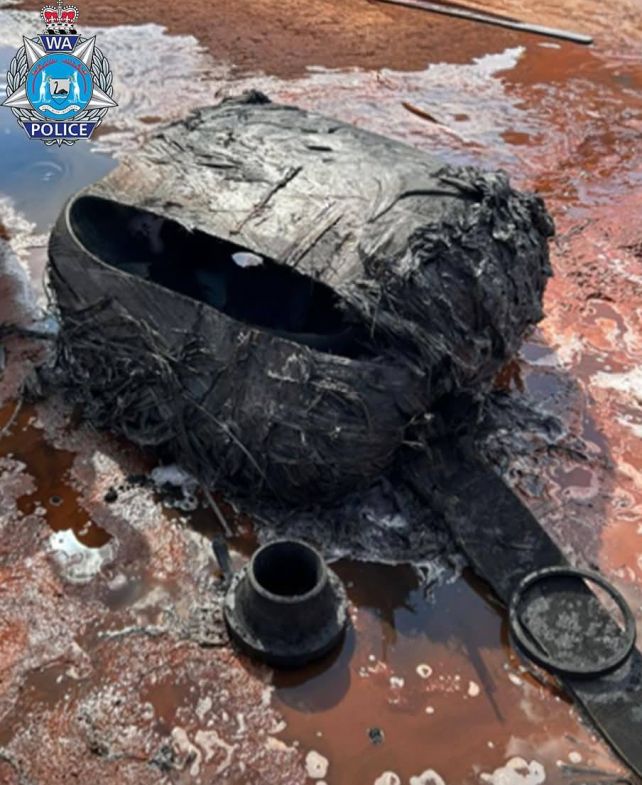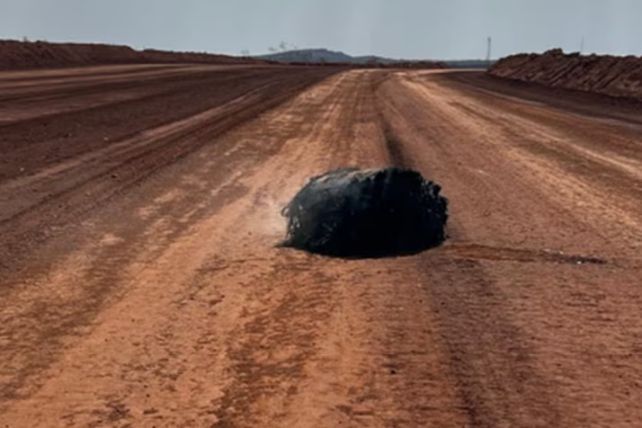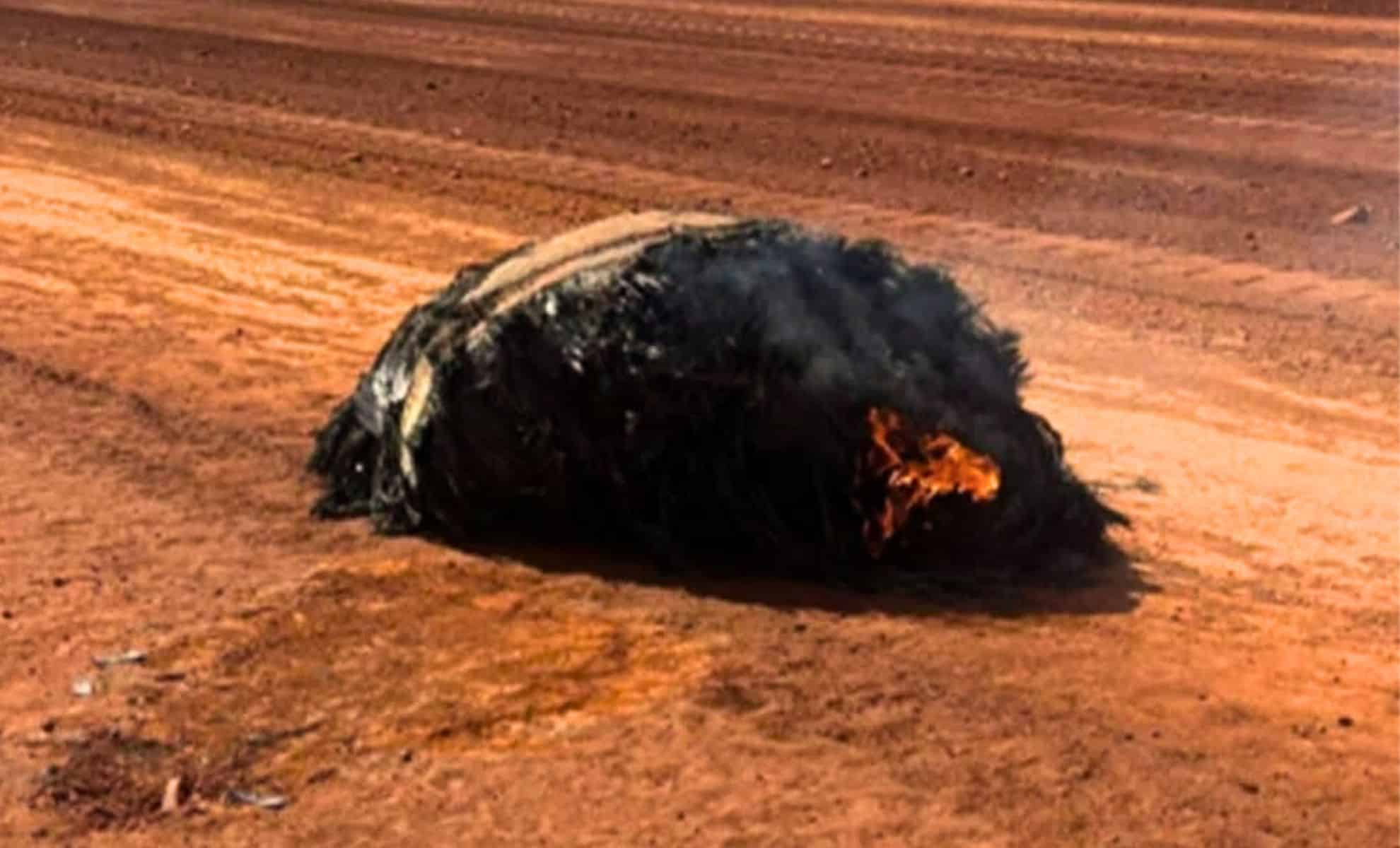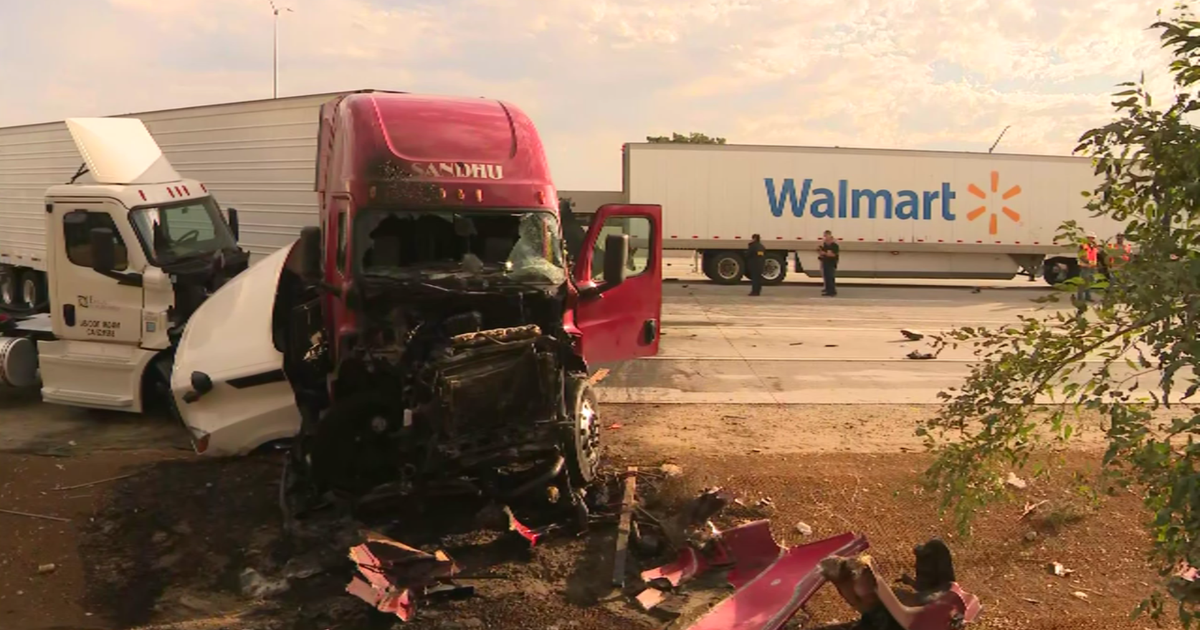In the early hours of October 18, miners working near Newman, a remote town in the arid Pilbara region of Western Australia, spotted a strange, charred object lying off a haul road. It was still smoldering. At first glance, the object looked like a twisted cylinder of blackened metal and composite — nothing that belonged to the land it crashed into.
Local police were the first on scene. The Western Australia Police Force, tasked with emergency response across the vast outback, quickly realized this was no discarded machinery or mining equipment. Initial reports described the object as carbon-fiber-based, consistent with components known to survive atmospheric re-entry, particularly those used in spacecraft.
By midday, a multi-agency investigation had mobilized. Specialists from the Australian Space Agency, alongside experts from the Department of Fire and Emergency Services, cordoned off the site. Early analysis suggested the item might be part of a composite-overwrapped pressure vessel (COPV) — a tank often used in rockets to store high-pressure fuel or gas. The Australian Transport Safety Bureau (ATSB) confirmed the wreckage was unrelated to any known aviation incident, ruling out a downed plane.

Theories began to circulate. Space archaeologist Dr. Alice Gorman, speaking to The Guardian, noted the debris may belong to the fourth stage of a Chinese Jielong rocket, launched just weeks earlier. “The shape, material, and construction align closely with past re-entry events,” Gorman said, pointing to previous cases in Australia and Africa where similar tanks landed mostly intact.
The discovery was reported by ScienceAlert, which cited preliminary police statements suggesting the object likely originated from a spacecraft. Images posted by the WA Police Pilbara District showed the charred fragment, roughly the size of a large drum, lying in scorched red sand — a jarring contrast to the otherwise empty outback.
When Rockets Fall Back to Earth
Every year, dozens of orbital launch vehicles are sent into space by agencies and private companies. Most burn up harmlessly upon re-entering Earth’s atmosphere. But not all parts disintegrate. Components like COPVs, often built from carbon-fiber-reinforced composites around an aluminum core, can survive the fiery descent. These tanks are engineered to withstand immense internal pressures and extreme heat — characteristics that, ironically, make them more likely to reach Earth’s surface intact.


A 2011 NASA technical report outlines how such vessels are deliberately built to resist rupture even under catastrophic conditions. These materials are not only used in rockets but are also found in satellite propulsion systems, reusable launch vehicles, and the International Space Station. When the controlled deorbit of a spacecraft fails — or is never planned — the odds of components like these surviving re-entry increase dramatically.
Australia has seen similar episodes before. In 2022, parts of a SpaceX Crew Dragon capsule washed up in the Snowy Mountains region. And in 1979, large sections of NASA’s Skylab rained down over Esperance, Western Australia — the town famously issued NASA a fine for littering, which remained unpaid for over 20 years.
Australia’s Growing Role in Space Surveillance
The Australian Space Agency is now analyzing the Pilbara debris at a secure facility. While they have not officially confirmed its origin, the working theory remains tied to recent launches by China. According to publicly available orbital data, a Jielong-3 rocket launched in September had components expected to re-enter within a window aligning with the object’s discovery.
Australia’s position in the Southern Hemisphere — and its vast stretches of sparsely populated land — make it a prime candidate for satellite tracking and debris recovery. Government initiatives, such as the Australian Space Surveillance Program, have ramped up efforts to monitor the skies. A recent statement from the Australian government outlines plans to expand national capabilities for tracking and mitigating orbital debris, while also reinforcing safety protocols for public encounters with unidentified objects.
Still, the event raises new questions about the safety of uncontrolled re-entries. The United Nations Office for Outer Space Affairs (UNOOSA) recommends that spacefaring nations ensure at least a 1-in-10,000 chance of harm for any re-entering debris. Yet enforcement remains weak, and accountability — especially when it comes to identifying the exact source of debris — is often murky.
In the meantime, authorities urge the public to report any strange metallic objects found in the bush, deserts, or on beaches. While the risk of toxicity or radioactivity is minimal, some spacecraft materials can pose chemical hazards. The Pilbara wreckage has been secured and poses no current threat to the public, police confirmed via Facebook.
First Appeared on
Source link












